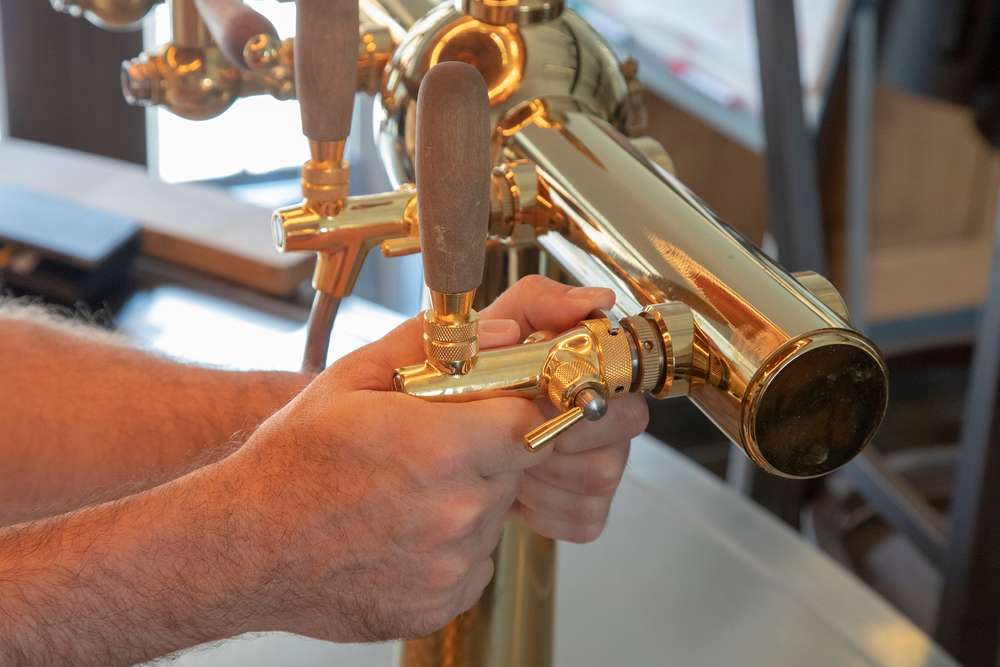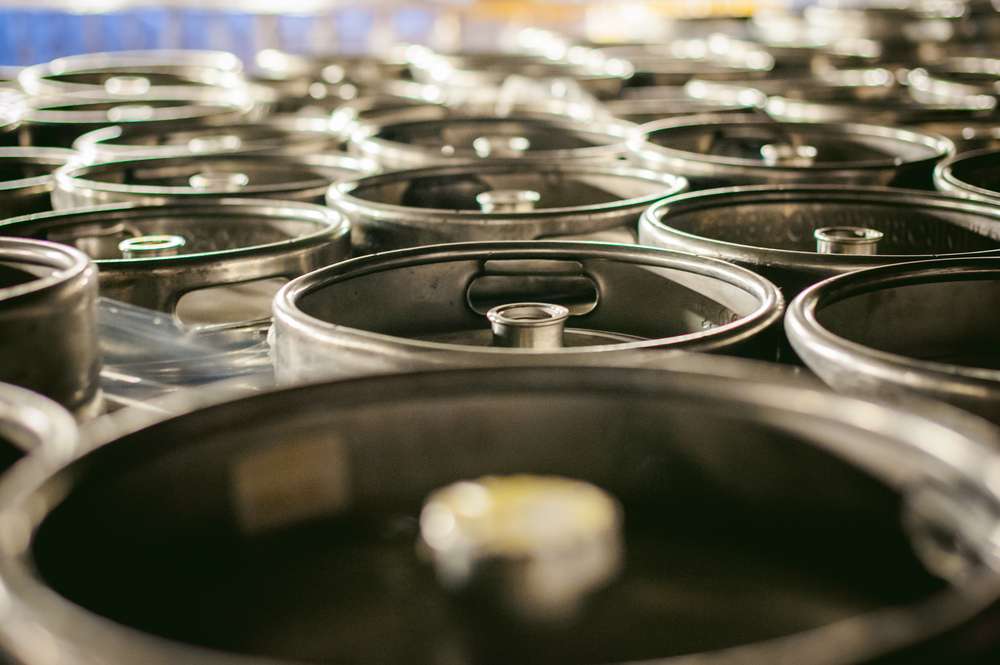Kegs have been a favorite form of packaging beer for homebrewers and breweries for many years. Kegs have the benefit of being able to get filled just once. Bottles, on the other hand, require a system including cleaning, sanitizing, drying, filling, and capping every time.
That is not to say that kegs are not cleaned or sanitized, however. Between each filling, bacteria and yeast inside the keg can easily build up and destroy the next batch of beer. To avoid a ruined batch or unsavory beer, you should ensure your kegs are maintained sufficiently.
Here is how to clean and sanitize a keg:
1. Depressurize and disassemble the keg
2. Remove the keg’s lid and sealing O ring – The lid can usually be lifted off easily with a squeeze and lift of the retaining bail
3. Remove the valve assemblies – Two valves should be disconnected with a standard hex wrench. Fitting sizes can vary
4. Prepare an alkali wash – Mix the cleaner with hot water in a bucket to the manufacturer’s recommended proportions
5. Place small components into the bucket – This includes the lid, gaskets, and valves. Ensure these are submerged
6. Fill the keg with alkali wash – From a separate bucket, pour the alkali wash into the keg and fill as high as possible.
7. Seal the lid and shake vigorously
8. Soak the keg in alkali wash – Leave for about an hour or overnight if possible
9. Drain and rinse the alkali from the keg – Ideally, after 24 hours, dump the alkali washout for the bucket and keg
10. Rinse the keg out with hot water – If at a bar, water temperature should be about 161 degrees Fahrenheit
11. Soak the keg and part in a sanitizing solution – Pour a gallon of water into the keg and then no-rinse sanitizer
12. Wait for 3 – 5 minutes – Pour the sanitizer solution out of the keg
13. Rinse the keg parts in the alkali bucket – Use warm water
14. Dry off the components with a clean towel or cloth
15. Reassemble the beer keg – Store in a clean, dry area until use

How do I clean and sanitize a Sanke Keg?
Cleaning and sanitizing a Sanke keg should only take around 25 minutes but with practice, this can be cut to 15 minutes if numerous kegs are prepped and clean simultaneously.
The washing solution should be changed with every few kegs. If you’re cleaning a batch of kegs, you could save a lot of time by getting another pair of hands to help.
A commercial keg washer such as the FastWasher Rack is certainly a worthy investment for these kegs as they are not the most practical for homebrewers. If you do not wish to spend money on these devices, you can still wash a Sanke keg by hand.
Read on to find out how:
1. Depressurize and remove the Sanke keg’s spear
2. Rinse the keg out with a hose around 2-3 times and allow to drain
3. Circulate hot PBW (powdered brewery wash) solution and shake. Leave it for 10 minutes. Allow draining
4. Rinse out the leg with a hose 2-3 times and let it drain
5. Inspect the keg. If it is not clean enough, repeat step 3 again. If it is sufficiently clean, move on to the next step
6. Fill around 10% of the Sanke keg with a sanitizing solution
7. Rinse the keg and assemble the keg spear
8. Splatter the keg with more sanitizer
9. Purge the Sanke keg with CO2
10. Store in a clean and dry area until use
How do you clean a keg still?
A keg still is important for getting the right taste for your brewed alcoholic beverage. This is especially true of spirits such as vodka and whiskey.
Here is how to maintain and keep our kegs still clean so you don’t get any unpleasant tastes of flux in the column:
1. Clean out with soapy water
2. Rinse with plain, warm water
3. Mix vinegar and water in the still and let it boil to produce an acidic vapor
4. Make up a basic mix for an alcohol cleaning run. You can not drink this so it should be a cheap wash. You could even use cheap wine to clean the still or make your own wash. To make your own, you will need:
- 5kg of cheap sugar
- 2 packets of yeast
- 50g of yeast nutrient
- Boiled water – This is to kill any bacteria or bugs in the water to ensure the wash does not become moldy
5. Clean the fermentation vessel, spoon, airlock, and hydrometer with a sterilizer
6. Boil up water (2 kettles)
7. Pour the boiled water into your fermentation vessel
8. Pour in the sugar until it is dissolved
9. Continue to add cold water until you reach the 20L level on your vessel
10. Let the wash cool down between 23 to 26 degrees Celsius (73 to 78 degrees Fahrenheit. This is to kill the yeast so it doesn’t become stressed and produce more ester, methanol, and fuser oils
11. Rinse out with water
12. Your keg still should now be clean

